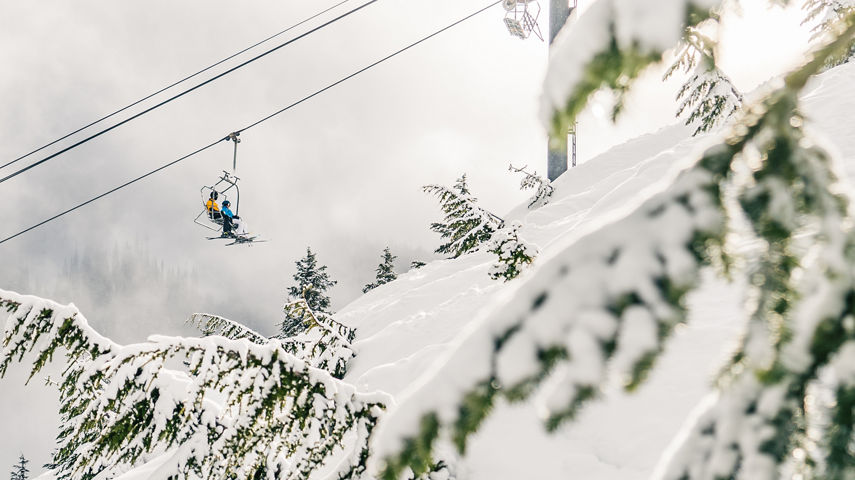
To Report An Accident
- Crossed skies means someone needs assistance.
- If you are injured have someone cross his or her skis above you or lay their snowboard above you. This makes it easier for ski patrol to find you and makes others on the hill aware that you are there.
- Send someone to the nearest Lift Operator, Patroller, or other Stevens Pass employee and give them exact location, noting trail name, tower number, skiers right or left of run, etc.
- Mark the site by placing skis in an "X" or snowboard vertically above the injured person.
Trail designations:
Stevens Pass trail difficulty is based on the degree of difficulty for our area. We recommend starting your day on the easiest trails and progressing up to your ability level to help avoid injuries.
We have:
- 11% easiest terrain
- 54% more difficult terrain
- 35% advanced terrain
Slow Zones
Slow zones are marked on the trail map. These areas are our beginner areas and congested areas. Please slow down through these areas. Please report violators to the Ski Patrol. Clothing descriptions are helpful. Violators will lose their ticket or pass.
Closed Areas
An area may be closed for safety considerations or avalanche danger. Violating a closure will result in loss of ticket or pass on initial contact. Responsibility Code #6 - RCW 79A.45.070
Your Lift Privileges May Be Revoked for:
- Reckless skiing/snowboarding defined as jumping into runs or blind areas, inverted aerials, riding too fast in a SLOW zone or congested area, or riding out of control.
- Swinging, bouncing, jumping or throwing objects from the chair.
- Disorderly conduct, loud or abusive language, drunkenness, use of illegal drugs.
- Riding in CLOSED AREAS.
- Ducking ropes.
- Removing or moving hill signs, bamboo, or ropes.
Out of Ski Area
The backcountry area outside of the Stevens Pass Ski Area boundaries is public land. However you must be aware of the potential for serious injury and costly rescue operations. However, you must be aware of the potential for serious injury and costly rescue operations. There is no avalanche control or patrol beyond the area boundary. Rescue from these areas is not guaranteed and if available, may be slow and costly. There may be times when hiking routes in the Ski area boundaries are closed due to avalanche danger or other safety concerns. Therefore, we recommend skiers/snowboarders stay within the resort boundaries for their own safety as well as the safety of others who may follow their tracks.
On Snow Vehicles
You may encounter vehicles such as snow groomers and snow mobiles anywhere on the mountain. Be on the lookout for warning sounds and lights to alert you to their presence. Yield to moving and avoid parked vehicles at all times.
Risk of Avalanche
While snow safety and avalanche mitigation efforts help reduce the risk of avalanches, avalanches and snow slides may occur at winter resorts both inside and outside the resort boundary. Avalanches are an inherent risk of the sport due to the nature of snow and its application on steep, mountainous terrain. Become educated on how to reduce the risk of avalanches through your actions and awareness.
Taking these steps may help reduce the risk of being injured or killed in an avalanche:
- Always ski/snowboard with a partner and keep them in sight at all times.
- Obey all signs and closures.
- Know the avalanche danger by visiting: https://www.nwac.us/avalanche-forecast/current/cascade-west-stevens-pass/
- Carry avalanche equipment such as transceivers, RECCO reflectors, probes and shovels when skiing/snowboarding in areas where avalanches may occur.
- Wear a helmet.
- Visit www.avalanche.org or contact the Stevens Pass Pro Patrol for further information on the risks and prevention of avalanche-related injuries and deaths.


